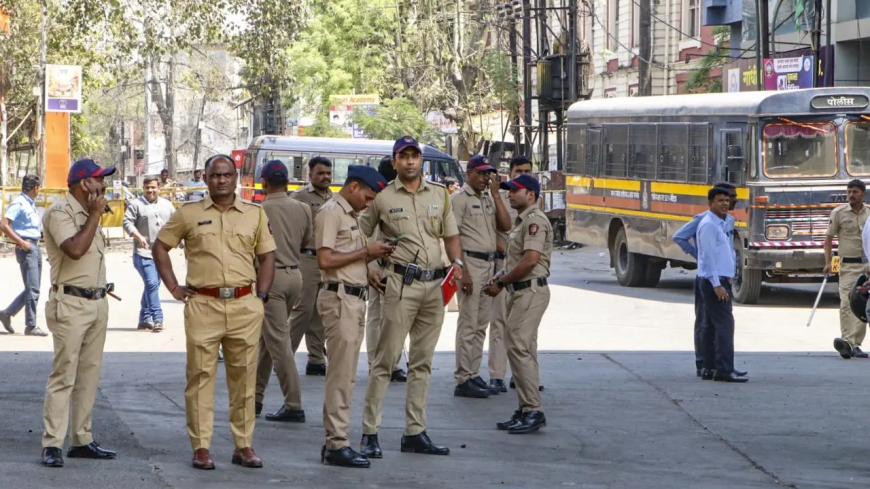Nagpur in Focus: Crime Crackdowns Intensify as Metro and Road Projects Reshape the City
As infrastructure projects like the Nagpur Metro and road expansions progress, local police ramp up operations to combat rising crime. Get the latest on Nagpur's crime control efforts and urban development.

Nagpur Crime Update: Rising Incidents Meet Stronger Policing Amid Metro and Road Transformation
Nagpur, Maharashtra’s winter capital, is undergoing a rapid transformation. With major infrastructure projects like the Nagpur Metro Phase II, ring road expansions, and new flyovers underway, the city is striving to position itself as a modern urban hub. However, this transformation hasn’t come without growing pains—an uptick in crime across several pockets of the city has prompted an aggressive crackdown by local law enforcement.
In a dual effort to support development while ensuring safety, Nagpur Police have intensified their surveillance, patrolling, and community outreach programs. The juxtaposition of new roads, metro lines, and rising criminal activity underscores the need for balanced urban planning and strong governance.
Crime Trends: What's Been Happening in Nagpur?
According to the latest data from Nagpur Police Commissionerate, there has been a noticeable rise in:
-
Theft and burglary cases in newly developed or under-construction areas
-
Chain snatching incidents near marketplaces and congested junctions
-
Drug-related offences, particularly in peripheral regions like Mankapur, Jaripatka, and Hudkeshwar
-
Property disputes and encroachments linked to development corridors
In the past quarter alone, over 250 FIRs have been registered across these categories. Many of the incidents appear to be opportunistic, exploiting the temporary chaos created by construction zones, increased vehicular flow, and migrant labor population surges.
Police Response: Technology, Teams, and Tactics
To address the surge, Nagpur Police have launched "Operation Safe Nagpur", a multi-pronged initiative involving:
-
Installation of over 300 new CCTV cameras under the Nagpur Smart City project
-
Deployment of mobile patrol units near construction hotspots
-
Special crime branches focusing on drug peddling and organized theft rings
-
Nighttime vehicle-checking drives on highways and internal roads
Commissioner of Police Amitesh Kumar stated in a press briefing:
"Our goal is not just law enforcement, but deterrence. With development comes vulnerability, and we are deploying resources accordingly."
Residents have also been urged to report suspicious activities through the Nagpur Police's cyber cell and WhatsApp helpline. The increased use of digital complaint filing is part of the city’s transition toward a tech-integrated law enforcement model.
For more details, the official updates can be followed on the Nagpur Police website.
Infrastructure Boom: Metro & Road Projects Reshaping the City
Parallel to the rise in policing efforts is the expansion of Nagpur Metro, currently in its Phase II implementation. Managed by the Maharashtra Metro Rail Corporation Ltd. (MAHA-METRO), the project aims to connect new suburbs like MIHAN, Kanhan, and Hingna, increasing accessibility for over 1.2 million residents.
Additionally, the Nagpur Ring Road Expansion Project, led by the National Highways Authority of India (NHAI), is easing congestion and opening up new land for residential and commercial use. However, as these areas become more accessible, they also become vulnerable to criminal activity, especially during the early stages of development.
For updates on progress and tenders, the official MAHA-METRO page at mahametro.org provides transparent tracking of project timelines.
Link Between Development and Crime: A Known Urban Challenge
Experts argue that urban infrastructure projects often unintentionally lead to short-term crime surges. Construction zones, temporary settlements, and isolated work areas can attract petty criminals and offer cover for illegal activities.
Urban planner and professor Dr. Suresh Chitnis explains:
“Infrastructure growth, if not coupled with proactive policing and social safety nets, creates blind spots. These blind spots, particularly near railway yards, bypass roads, and isolated metro stations, become hotspots for criminal activity.”
The lesson here is clear: urban development must be accompanied by increased civic services, surveillance, and community engagement.
Community Policing and Resident Involvement
Recognizing the role that residents play in crime prevention, the Nagpur Police have partnered with local RWAs (Resident Welfare Associations) and market associations to promote vigilance.
Initiatives include:
-
Awareness drives in schools and colleges
-
Workshops for construction workers and site managers
-
Regular beat officer meetings with neighborhood watch groups
Citizens have praised these efforts, especially in areas like Dharampeth, Civil Lines, and Sakkardara, where crime incidents have visibly declined since community engagement programs began.
Political and Administrative Responses
The Nagpur Municipal Corporation (NMC), in coordination with the Maharashtra Urban Development Department, has pledged to integrate safety planning into all ongoing development blueprints. The NMC Commissioner, Dr. Abhijit Chaudhari, noted:
“Safety audits are now a mandatory part of our infrastructure rollouts. We’re working with police and civic bodies to ensure lighting, fencing, and surveillance systems are built into the project lifecycle.”
This is in line with Maharashtra’s broader urban safety mandate, aiming to prevent the replication of crime-prone patterns seen in other expanding metros like Pune and Mumbai.
Looking Ahead: Smart and Safe Nagpur
The city’s dual challenge is now clear—maintain momentum in urban infrastructure while keeping crime under control. With national attention on smart city rankings and sustainable development, Nagpur’s law enforcement and administrative teams are under pressure to deliver results.
Already, the increased visibility of police forces, integration of technology, and cooperation between agencies are being seen as models for Tier-2 cities across India dealing with similar challenges.
As per the latest report from Smart Cities Mission, Nagpur ranks among the top ten in project implementation speed but still lags in citizen safety indicators—a gap that recent efforts aim to bridge.
Conclusion
Nagpur stands at a pivotal moment in its evolution—from a laid-back administrative center to a high-growth urban node. With mega projects like the Metro and road corridors transforming its landscape, the surge in criminal incidents has posed a serious test of governance.
The coordinated crackdown on crime, fueled by technology and community involvement, signals a mature, integrated approach to urban management. For Nagpur to truly succeed as a model smart city, its development must not just be fast—but safe, inclusive, and secure.

















































